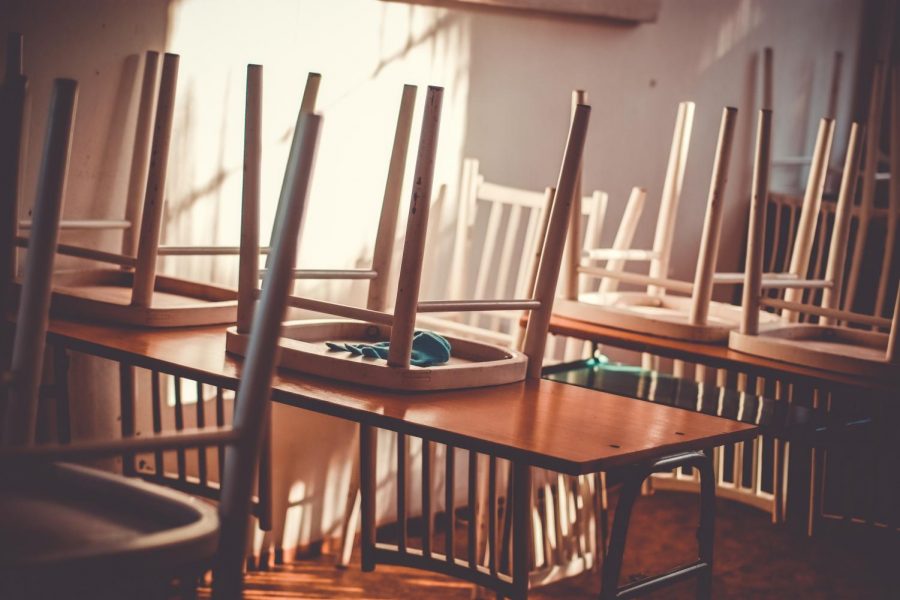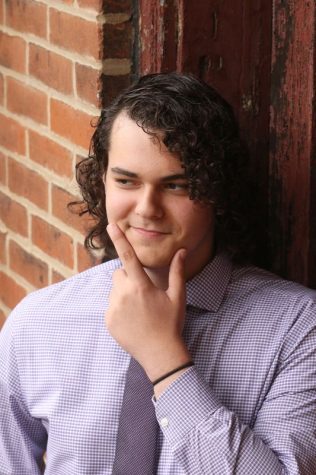Hybrid Learning: The Kafkaesque Classroom
November 14, 2020
Lake Forest High School brought freshmen and sophomores into the building for in-person instruction on November 9, much to the dismay of Lake Forest teachers. In Deerfield, a different choice has been made. As of October 13, District 113 schools will continue remote instruction through the end of the second semester. This decision is a continuation of the school board-approved first semester plan; this was not August’s best-case scenario for District 113 administration. Behind all this was the conclusion that it would be particularly difficult for teachers to give instruction in a hybrid setting.
Our district’s caution is by no means unreasonable. At the October 13 meeting of the Board of Education, Dr. Bruce Law presented his opinion that any feasible form of hybrid learning was akin to “shoehorning” remote learning into a classroom with six kids in it. Jerry Lavin, President of the DEA, explained this notion. “Picture this,” Lavin illustrated, “In your classrooms where there might be a quarter of the students there, let’s say six out of twenty-four, you’re all at least six feet apart from each other, you have your computers, you’re wearing masks, you have to wear headphones because neither zoom nor Google Meet were designed to be done within a single room.” The problem of feedback arises, too, unless everyone but the speaker mutes themselves. Additionally, schools may not have the bandwidth for all of this. And at a basic level, a hybrid learning environment does not mean that the teacher will be teaching any differently than how they can remotely, or as Lavin put it, “There’s no real communication that’s going on there except through the machine.” It only presents a more cumbersome process. The bottom line is, what we have now is the best option available. “There has not been identified yet, across high schools in the area, an instructional method that is superior to what we are doing now,” posited Lavin.
Therefore, the Board decided that the district would continue with a “Remote Plus Services” model. What this means is a combination of fully remote learning with the titular services which are provided in-person. Is this a frustrating reality? Yes, but not as much lately. Dan Kim, Director of Instructional Technology, explained that since the beginning of quarantine, our district has been very fortunate. “All the staff have laptops, the students have one-to-one Chromebooks, we had the infrastructure of Schoology which was really helpful,” Kim said, yet, on the other hand, “it’s not so much the technology as it is the skills it takes to use the technology or understanding how to incorporate your curriculum, your pedagogy, your teaching style and framing it with the technology we have.” That’s where District 113 has improved. It’s gotten consistently easier to perform tasks across the board. Since the beginning of remote learning, assignment submission has been streamlined, Zoom skills have been honed, activities have been transposed to the internet. This doesn’t mean that more tech isn’t needed, as Kim divulged, “We have a bunch of cameras for all the classrooms in both buildings. Apparently, they’re receiving monitors as a hub and second screen to help facilitate the hybrid setup.” Clearly, the infrastructure for remote and hybrid learning is not being ignored. Instead, it is the services that are being emphasized. What these services are, according to Mr. Lavin, is variable. “It could be many things and that’s the model that we’ve been operating under,” said Lavin, “services might be sports, clubs, could be academic support centers such as our ARC.” Services are also those that cater to students with special needs, whatever they may be.
Overall, the situation is still progressing. Limited in-person instruction, a hybrid structure, is being considered for the second semester of this school year. But for now on the remote front, Daniel Kim reminds us, “We’re constantly in the pursuit of trying to emulate the physical classroom,” and that is a struggle that will never be complete. And for services, Lavin knows, “There’s a lot more that can be done.” Nevertheless, it is abundantly clear that for the time being, “Remote Plus Services,” and not in-person instruction, is the most viable option for District 113.


